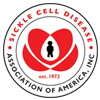Trusted Resources: Evidence & Education
Scientific literature and patient education texts
Guideline on the management of acute chest syndrome in sickle cell disease
source: British Journal of Haematology
year: 2015
authors: Jo Howard, Nicholas Hart, Marilyn Roberts-Harewood, Michelle Cummins, Moji Awogbade, Bernard Davis
summary/abstract:Sickle cell disease (SCD) affects 12 000–15 000 individuals in the UK. Whilst homozygous SCD (sickle cell anaemia — HbSS) is the most common and severe genotype, and is where most of the evidence exists, this guidance should be used for all genotypes of SCD.
Acute chest syndrome (ACS) is defined as an acute illness characterized by fever and/or respiratory symptoms, accompanied by a new pulmonary infiltrate on chest X-ray (Charache et al, 1979; Ballas et al, 2010). This definition encompasses cases both where an infective organism is isolated and where no infective cause is identified. It is unique to SCD but in some cases ACS may appear to be similar to bacterial pneumonia in a patient without SCD. ACS may have a severe clinical course and can progress rapidly from mild hypoxia to respiratory failure and death. The presence of hypoxia is not included in the definition, but in clinical practice, hypoxia is a useful predictor of severity and outcome (Vichinsky et al, 1997, 2000).
Historically, ACS is one of the most common causes of death in patients with SCD (Platt et al, 1994; Lucas et al, 2008), although mortality is improving with improved medical management (Fitzhugh et al, 2010). ACS can also be associated with significant morbidity, including long-term parenchymal lung damage, pulmonary vascular abnormality and neurological sequelae. Patients may present to hospital acutely unwell with ACS or ACS may develop during a hospital admission following a painful crisis or post-operatively.
organization: Guy's and St Thomas' NHS Foundation Trust, London; St Thomas' Hospital, London; North Middlesex Hospital, London; Bristol Royal Hospital for Children, London; King's College Hospital, London; Whittington Hospital, London.DOI: 10.1111/bjh.13348
read more full text
Related Content
-
SCA Therapy Hydroxyurea Doesn’t Boost Malaria Risk in Sub-Saharan Africa, Study FindsHydroxyurea, a treatment recommended for...
-
Dyspareunia is Associated With Chronic Pain in Premenopausal Women With Sickle Cell DiseaseObjectives: Pain is common in women wit...
-
Sickle Cell Trait and Risk of Cognitive Impairment in African-Americans: The Regards CohortBackground: Sickle cell anemia may be ...
-
Sickle Cell Disease Management & Complications: Sophie Lanzkron MD of Johns HopkinsStuck on sickle cell disease? We hammer ...
-
Small chips, big impact: MSU researcher studies cardiovascular, sickle cell diseaseA Mississippi State University researche...
-
FDA Awards $2M to Phase 2 Trial of Vitamin D for Reducing Risk of SCD Respiratory ComplicationsThe U.S. Food and Drug Administration (F...
-
Cognitive Function may be Affected in Adults With Sickle Cell Disease, Study SuggestsAdults with sickle cell disease score wo...
To improve your experience on this site, we use cookies. This includes cookies essential for the basic functioning of our website, cookies for analytics purposes, and cookies enabling us to personalize site content. By clicking on 'Accept' or any content on this site, you agree that cookies can be placed. You may adjust your browser's cookie settings to suit your preferences. More Information
The cookie settings on this website are set to "allow cookies" to give you the best browsing experience possible. If you continue to use this website without changing your cookie settings or you click "Accept" below then you are consenting to this.




 +myBinder
+myBinder
